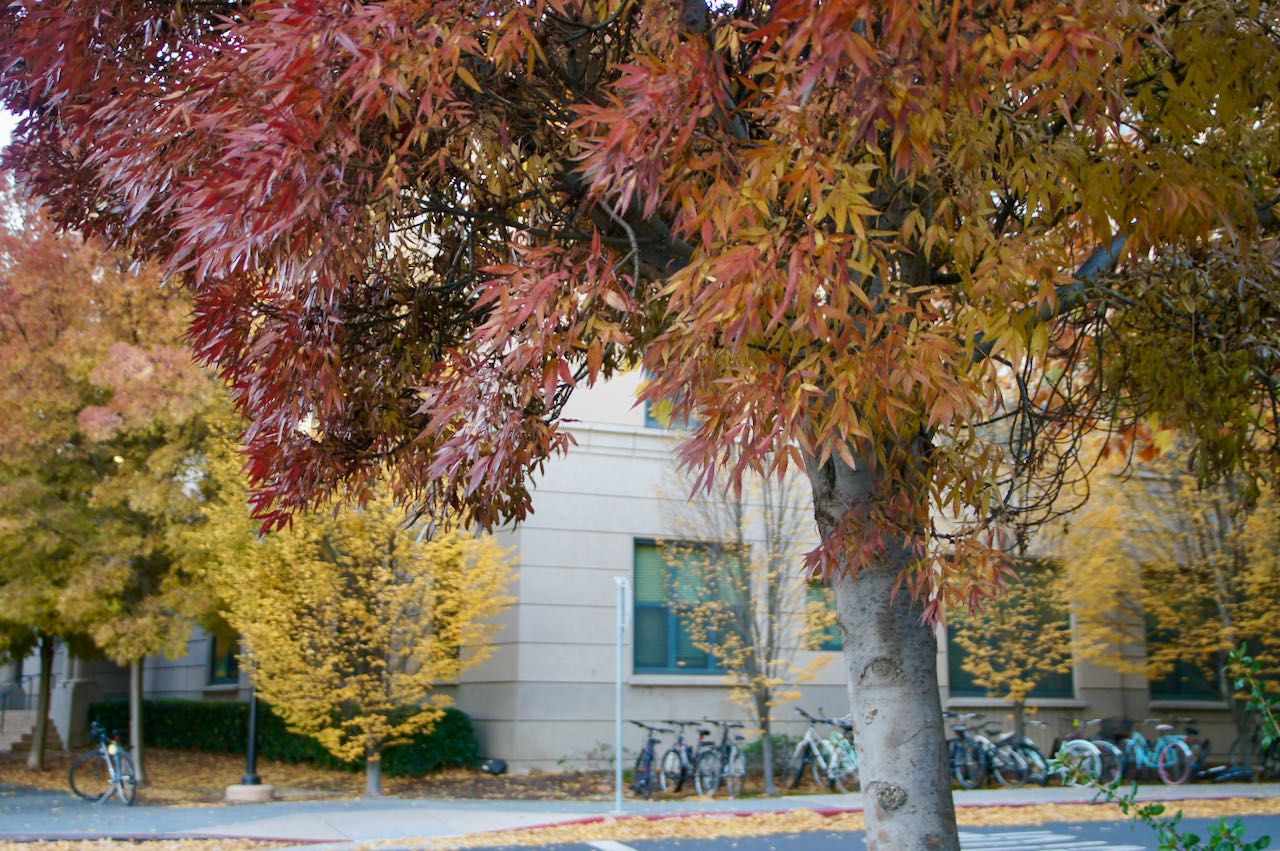
The Raywood Ash tree, also known as the Claret Ash, is a stunning ornamental tree that adds beauty and shade to landscapes. With its vibrant foliage and graceful form, the Raywood Ash has become a popular choice for parks, streets, and residential areas. This article will delve into 18 fascinating facts about the Raywood Ash tree, shedding light on its characteristics, benefits, and cultural significance. From its botanical features to its environmental impact, exploring these facts will deepen your appreciation for this remarkable tree. So, let's embark on a journey to uncover the allure and significance of the Raywood Ash, discovering what makes it a beloved tree in horticulture and urban forestry.
Key Takeaways:
- The Raywood ash tree, native to North America, is a stunning and low-maintenance tree that adds beauty and ecological value to urban landscapes.
- With its vibrant foliage, rapid growth, and resistance to pests, the Raywood ash tree is a popular choice for urban landscaping, providing shade and essential ecosystem services.
It is a native of North America.
The Raywood ash tree (Fraxinus oxycarpa 'Raywood') is native to North America, where it thrives in a variety of climates and soil conditions.
The Raywood ash tree is a deciduous tree.
This means it sheds its leaves annually, typically in the fall, before regrowing them in the spring.
The tree's leaves turn a stunning deep burgundy in the fall.
One of the most striking features of the Raywood ash tree is its vibrant foliage, which transforms into a rich burgundy color during the autumn months.
It belongs to the olive family, Oleaceae.
The Raywood ash tree is a member of the Oleaceae family, which also includes olives, jasmine, and lilacs.
The tree can reach a height of 40 to 60 feet.
In optimal conditions, the Raywood ash tree can grow to an impressive height, providing ample shade and visual appeal.
It has a spread of 25 to 35 feet.
The tree's broad canopy extends horizontally, creating a generous shaded area beneath its branches.
The Raywood ash tree produces clusters of small, inconspicuous flowers.
While not particularly showy, the tree's flowers contribute to its overall ecological significance by supporting pollinators.
It is a low-maintenance tree.
Once established, the Raywood ash tree requires minimal maintenance, making it an attractive option for homeowners and landscapers.
The tree is tolerant of urban conditions.
Its adaptability to urban environments, including pollution and compacted soil, makes the Raywood ash tree a valuable addition to city landscapes.
The Raywood ash tree is resistant to many common pests and diseases.
This resilience reduces the need for chemical interventions, aligning with sustainable gardening practices.
It is often used as a street tree.
Due to its tolerance of urban stresses and visually appealing attributes, the Raywood ash tree is frequently planted along streets and in public spaces.
The tree's wood is used in various applications.
The wood of the Raywood ash tree is employed in crafting furniture, tool handles, and sports equipment due to its strength and flexibility.
It is a fast-growing tree.
The Raywood ash tree exhibits rapid growth, allowing it to establish quickly and provide its benefits within a relatively short timeframe.
The tree's scientific name, Fraxinus oxycarpa, reflects its unique characteristics.
The genus Fraxinus refers to the ash trees, while the species name oxycarpa denotes its distinctive fruit.
The Raywood ash tree's fruit is a winged seed called a samara.
These samaras are dispersed by the wind, aiding in the tree's reproduction and distribution.
It is a popular choice for urban landscaping.
Due to its adaptability, aesthetic appeal, and low maintenance requirements, the Raywood ash tree is widely utilized in urban landscaping projects.
The tree's striking appearance adds visual interest to any landscape.
With its graceful form, vibrant foliage, and year-round beauty, the Raywood ash tree serves as a captivating focal point in gardens and public spaces.
The Raywood ash tree provides essential ecosystem services.
Beyond its ornamental value, the tree contributes to air purification, soil stabilization, and habitat provision for wildlife, enriching its surroundings.
The Raywood ash tree's exceptional qualities make it a sought-after species for enhancing urban and suburban landscapes, offering both aesthetic and ecological benefits.
Conclusion
In conclusion, Raywood Ash trees are remarkable additions to any landscape, offering a perfect blend of beauty, resilience, and environmental benefits. With their stunning foliage, adaptability to various soil types, and minimal maintenance requirements, these trees stand out as excellent choices for homeowners and landscapers alike. By understanding the unique characteristics and care needs of Raywood Ash trees, individuals can make informed decisions about incorporating them into their outdoor spaces, enhancing the aesthetic appeal and ecological value of their surroundings.
FAQs
Are Raywood Ash trees suitable for urban environments?
Absolutely! Raywood Ash trees thrive in urban settings, thanks to their tolerance for pollution and compacted soil, making them ideal choices for adding greenery to city landscapes.
How can I ensure the optimal growth of my Raywood Ash tree?
To promote healthy growth, provide your Raywood Ash tree with well-draining soil, ample sunlight, and regular watering, especially during its initial establishment period. Additionally, periodic pruning and mulching can further support its overall health and vigor.
Was this page helpful?
Our commitment to delivering trustworthy and engaging content is at the heart of what we do. Each fact on our site is contributed by real users like you, bringing a wealth of diverse insights and information. To ensure the highest standards of accuracy and reliability, our dedicated editors meticulously review each submission. This process guarantees that the facts we share are not only fascinating but also credible. Trust in our commitment to quality and authenticity as you explore and learn with us.
